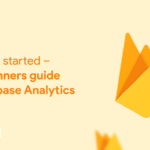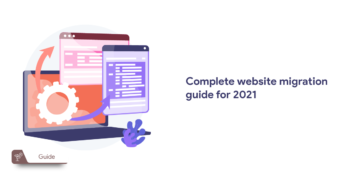Are you an aspiring entrepreneur who wants to start an eCommerce store? Do you think it is time to expand your existing business? Here’s an ultimate guide on how to write a business plan which can drive you there.
What is a business plan?
A document that describes the key details of a business such as its products and services, revenue model, and operations model is termed as a Business Plan. The document might also include its goals, financing pattern, staffing, and other leadership level details.
Formulating a business plan helps you structure your business strategy by providing a systematic methodology for validating your business idea.

The purpose of a business plan
The main purpose of a business plan is to describe and analyze a business opportunity in terms of its technical, economic, and financial feasibility. It will also help you assess:
- Markets – Target segments and related insights
- Competitor profiles and related research
Why do you need a business plan?
A business plan is inevitable in selling your idea to potential investors and bankers. It can also serve as a promotional document. Hence it is imperative that you understand how to write a business plan. The following are some compelling reasons to write a business plan:
- A business plan helps you to plan and evaluate your ideas before putting them into action
- Researching the market as a part of preparing the business plan will help you know more about your customers and competitors. This helps you make informed strategic decisions
- If drafted wisely, it can be one of the easiest ways to convey your vision and mission to the new recruits. This way you can also boost their morale and confidence.
- Business promotion plays an integral part in presenting your business to investors. A well-drafted business plan cans serve very well as the promotion document
Interested in knowing more? Read on to understand the nuances of writing a successful business plan.
Step-by-step guide: How to write a business plan
Before you start writing a business plan, consider the following factors that contribute to its success:
- Having a clear goal is a must while drafting a business plan
- Invest time in doing your research. This includes understanding your products and services, their demand, and the target market
- Understanding the target audience is equally important so that you can decide tone, style, and voice
- Decide the size of your business plan. Ideally, it should be short and readable around 15-20. If there are any additional documents you can add them to an appendix.
Sample business plan
Step 1: Create your executive summary
An executive summary is the first part of any business plan. Its purpose is to condense the whole business idea so that anyone who looks at the document gets an idea. It is mainly aimed at the investors and hence must include a high-level overview of your business.
It should ideally include:
- Mission statement
- General company information
- Highlights
- Products and services
- Financial information
- Future plans
Step 2: Add your company overview
The company overview is an overall summary of the structure of your business.
When writing your company overview, you should add the following:
- What you do: Start your company overview section with a few information describing what your business does
- Industry and marketplace: This part should elaborate on the nature of the industry and marketplace of business
- Legal structure This is the part where you define your company as a legal entity and provide an overview of your ownership structure
Step 3: Perform your market analysis
The purpose of the market analysis is to win the investors’ confidence by demonstrating that you (the person who owns the business), has a clear picture and solid understanding of the industry, market, and competitors. Segregate these under the following headings:
- Target market and its characteristics
- Target market size, growth, and potential
- Market pricing
- Challenges
- Competitor research
Step 4: Define your business’s organization
While defining the business’s organization, the following is what you have to cover:
- Organizational and ownership structure
- Information about the stakeholders such as the background of your team, managers, partners, and board of directors
- Recruitment Plans for the future
Step 5: Describe your products and services
Your business plan will not be complete if you do not describe the nature of the products and services that you are going to offer. Start off this part by enlisting your service or product, and the targeted customers. You can talk about your niche and the business purpose that you plan to serve. A comprehensive research done beforehand will help you fulfill this requirement.
Step 6: Explain your marketing and sales plan
After describing your service domain/product niche, next comes information about your marketing strategies. Here, the plan should shed some light on how you are planning to launch, position, and promote your business into the market in your own unique way. This involves any plans you have for packaging, advertisements for the product (online or in other media sources), PR part of your product, or content marketing strategies.
The next is the sales plan. The business plan should give a clear idea of your sales force- personnel, training, and strategies.
Step 7: Detail your financial plan and projections
Finance is the crux of any business. Once you finish drafting the marketing and sales plan, the document should speak about the current state of your finances and then map out where you want to be financially in the future.
If you are already in business, you can showcase projections and financial plans based on past financial data and performance. The documents can include:
- Income statements
- Cash flow statements
- Balance sheets
- Accounts receivable statements (if applicable)
- Accounts payable statements (if applicable)
- Documentation of debt obligations (if applicable)
On the contrary, if you are new to the business, you can use financial projections arrived at after research and analysis. Forecasting your business’s financial journey plan should ideally include:
- Statements of projected income
- Cash flow forecasts
- Balance statements
- Capital expenditure budgets
Step 8: Add an appendix
All the supporting information which is not included in thus far in the document can be kept here. Additional data points, footnotes, graphs/charts can be included in the appendix of your business plan.
Additionally, It can also cover documents like any contracts, legal documents, business licenses or permits, and also product pictures.
Conclusion
The best way to start writing your business plan is to list down all the information that you know and then try to segregate them under these headings. Remember to be concise and be consistent in your tone. Once you finish the draft don’t forget to proofread!
Already a WooCommerce store owner? Build a Mobile App to Win More Customers
Appmaker specialises in Quality and Performance guaranteed, E-Commerce Android/iOS Apps for E-Commerce Businesses. Get in touch









